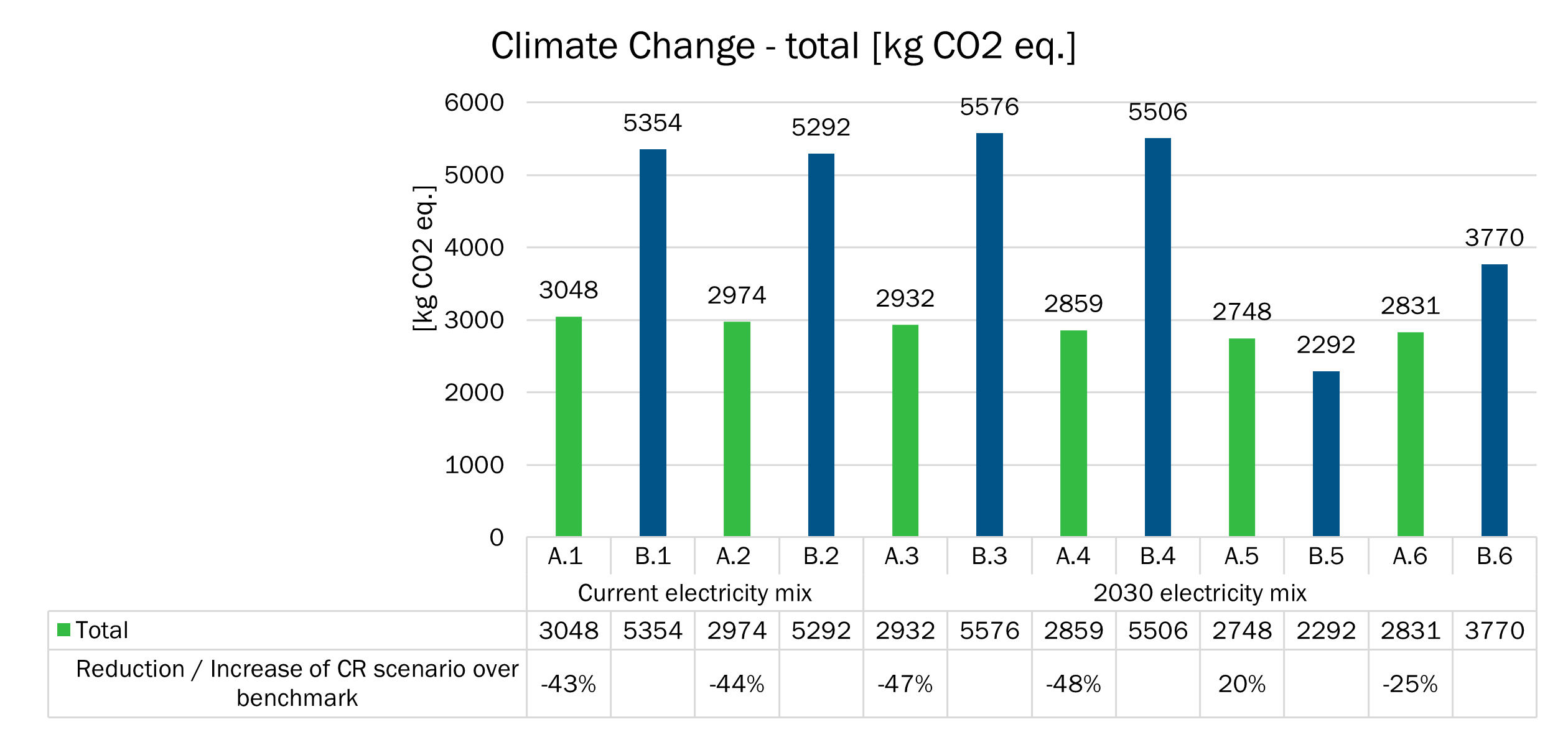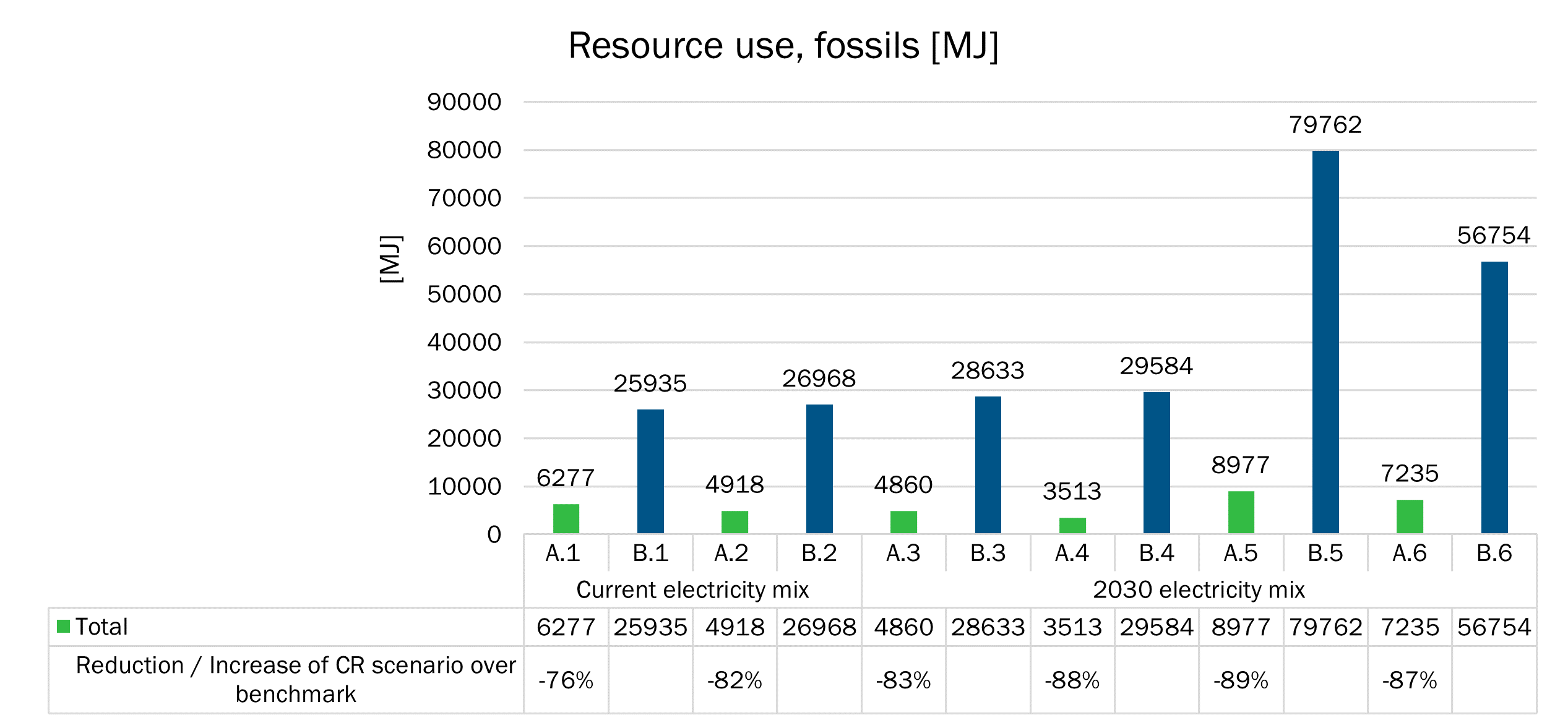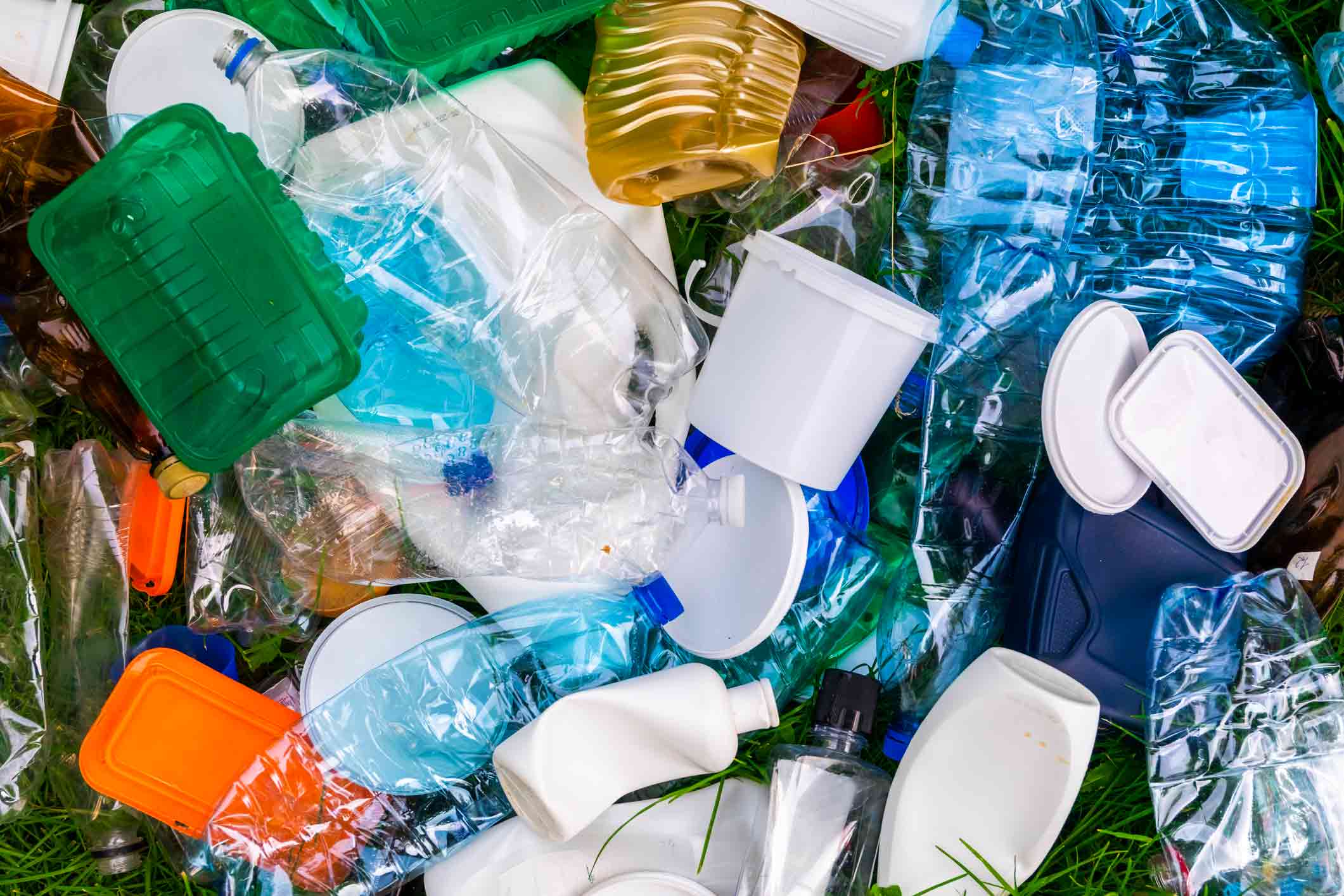Life Cycle Assessment of Chemical Recycling for Food Grade Film
The three R’s—Reduce, Reuse and Recycle–have become part of everyday speech, and they’re a great example of a big idea compressed into a few syllables. Less well-known by the general public is the crucial role played by various methods for that last R: Recycling.
As we’ll see in this life cycle assessment (LCA), different recycling approaches have significantly different upstream effects and change the benefit equation for all three of those R’s. The best recycling methods reduce the demand for new material extraction; improve reuse of plastic waste products; and maintain or improve quality of output in the recycling process. They also optimize energy use and minimize global warming potential (GWP).
There are, of course, powerful economic and environmental incentives for improvement of recycling techniques, but for plastics the need is especially urgent. Accurate measurement and testing plays a crucial role for choosing the right recycling paths and making infrastructural and institutional investments. That’s why Sphera was happy to work with the Consumer Goods Forum to conduct a life cycle assessment (LCA) on pyrolysis and related chemical recycling technologies (Py-CR) of post-consumer, mixed plastic waste in Europe. The goal: to evaluate the potential environmental impacts of circular, chemically recycled (CR) food grade plastics-to-plastics (P2P) systems, compared to conventional, fossil-based ones. This study also helps to provide additional information to help recycling practitioners and decision-makers better understand the impact of scaling this technology for “hard-to-recycle” flexibles and consider using it as a complementary solution to existing mechanical recycling.
Scope of the Study
Pyrolysis-based chemical recycling aims to reduce the amount of mixed plastic waste (MPW) sent to incineration and landfills by enabling high-quality recycling from a low-quality waste stream that is otherwise unsuitable for mechanical recycling. As you might guess from the name, pyrolysis breaks down the plastics through a thermal process. This process reduces the material to monomers, delivering gases and condensates that can be fed into the existing chemical processing streams of big chemical plants around the globe.
The study was carried out in line with the international standards for LCA–ISO 14040 and ISO 14044—and underwent a critical review by a panel of three independent experts.
As you can see in the table below, the bounds of the system evaluated by the LCA covers the entire “plastic-to-plastic” value chain: starting from mixed plastic waste to the end-of-life (EoL). The table outlines the Py-CR method compared to the current cradle-to-grave product systems, which use primary material production and incumbent waste treatment options (incineration with energy recovery and landfill).
This study used primary data from three different technology providers for the Py-CR system, while secondary data was used for conventional production and waste treatment processes.
Overall, six scenarios were evaluated to determine the best methods in terms of climate change impact and fossil resource usage. As you will see, the results are encouraging for the Py-CR method.

Key Findings
The results for the selected impact categories, climate change and fossil resource use, are as follows:
- Regarding climate change (see chart below), the Py-CR pathway has lower total GWP than the primary naphtha production with 100% incineration (B1 to B4) and mixed EoL (B6). The product systems with EoL incineration (B1 to B4) and mixed EoL (B6) are mainly driven by combustion emissions during waste incineration, which results in higher total GWP results compared to the Py-CR product systems.

- The fossil resource use results (see chart below) show the main advantage of the circular Py-CR product system over a virgin naphtha-based product system. The Py-CR process outperforms all comparative product systems assessed due to the mixed plastic waste used as a feedstock for food grade film production.

- The highest total fossil resource depletion potential occurs for primary naphtha production with landfilling in EoL (B5). This is because neither material nor energy is recovered from the landfilled material. The results demonstrate the negative impacts of a linear product system based on primary, fossil-based raw material production, coupled with waste treatment exclusive of any recycling activity. As we would expect, the 100% landfilling scenario (B5) for the naphtha-based product system results in the lowest result for climate change impact— however it’s the worst option for fossil resource depletion.
Additional Scenarios Analyzed
Additional scenarios varying the end-of-life collection rate and the electricity credits from different sources yielded the following insights:
- The life cycle results of the incineration-based product system vary based on assumptions of electricity credits given for electricity grid mix substitutes. Although the relative ranking between the product systems remains the same with electricity from coal or natural gas, the difference becomes marginal regarding climate change based on electricity substitutes from coal.
- Life cycle impact results of the Py-CR product system vary based on the EoL collection rate of 85%; however, the relative ranking between the product systems compared remains in most cases, given a higher collection rate of 100% or a lower collection rate of 30%.
In summary, the plastic-to-plastic Py-CR product system shows lower impacts in climate change and fossil resource usage compared to current cradle-to-grave product systems, based on primary process data for the Py-CR and using secondary data benchmarks for the substituted combustion-emissions for energy generation.
Sphera’s sustainability consultants will continue to update the Py-CR scenarios as newer data becomes available, and as additional, improved scenarios are devised and tested.
The complete study can be downloaded here.

